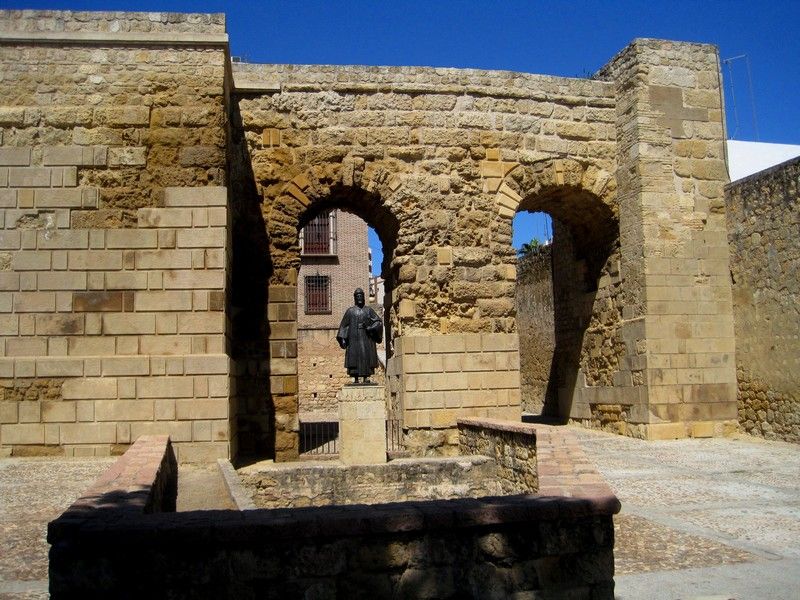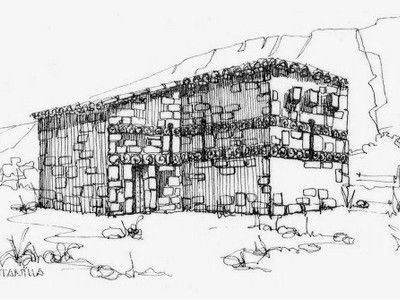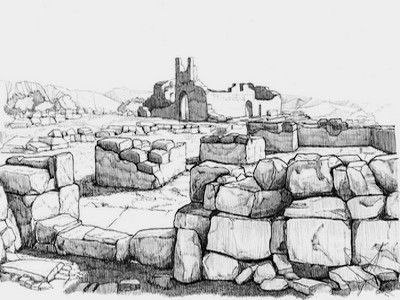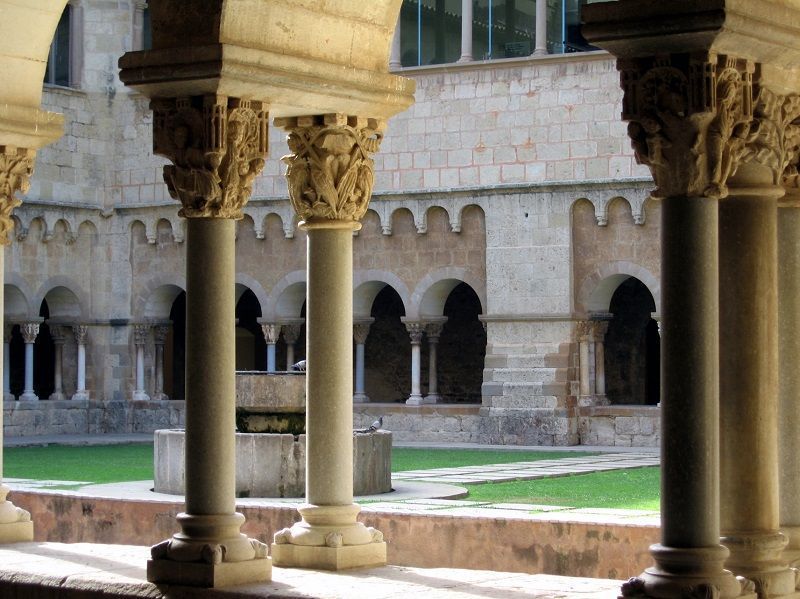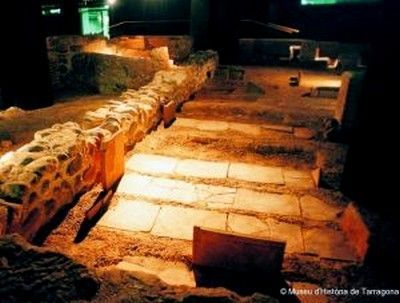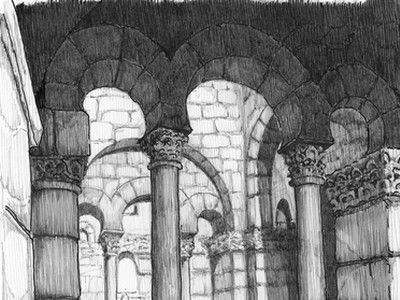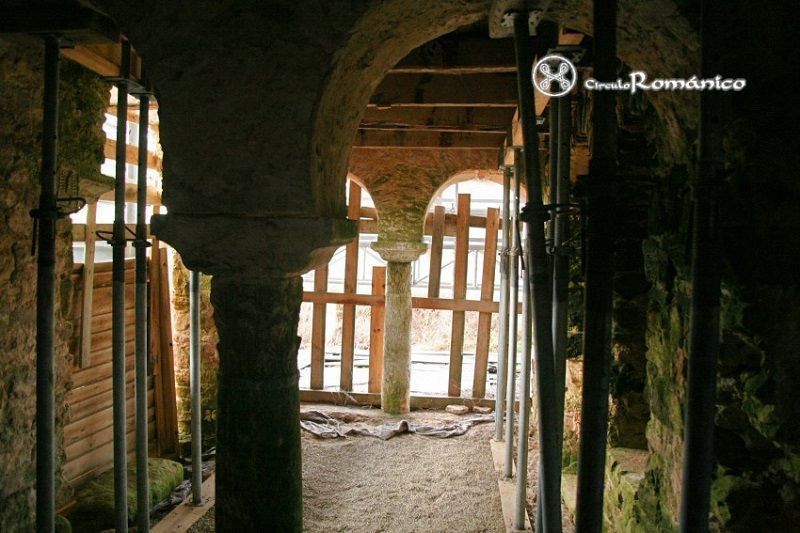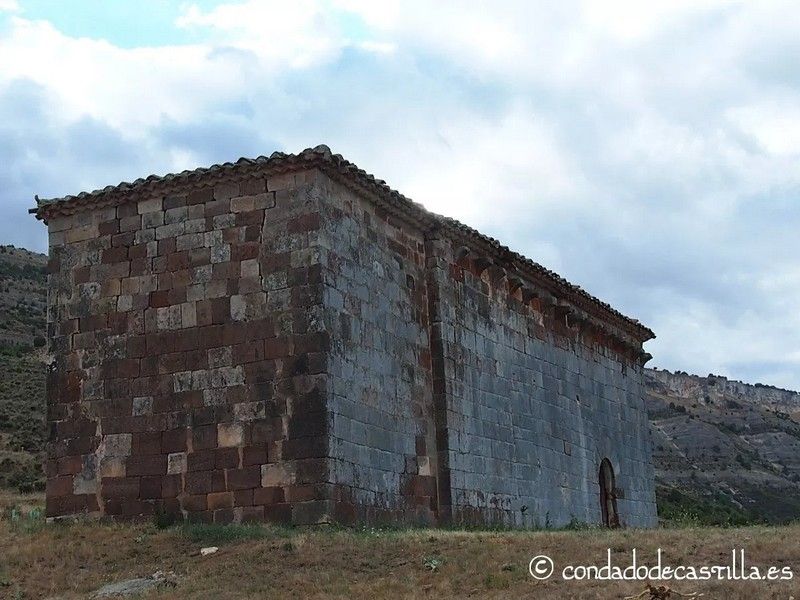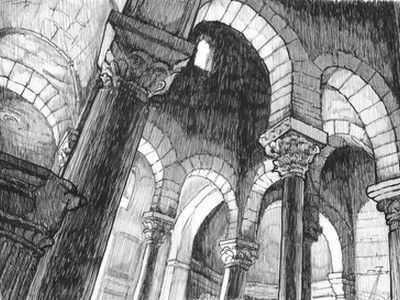Index of files of monuments
NECRÓPOLIS DE CASTILTIERRA
Visigoth - 6th Century - Segovia
La necrópolis se encuentra enclavada a 1km de Castiltierra, Segovia. Por su extensión y magnitud, que se traduce en una permanencia cronológica desde finales del siglo V hasta los últimos tiempos del reino visigodo, y por la variedad y espectacularidad de los ajuares, esta necrópolis es, junto a la de El Carpio de Tajo (Toledo), Herrera de Pisuerga (Palencia) y Duratón (Segovia), una de las más conocidas y valoradas dentro de la historia peninsular visigoda.
NECRÓPOLIS DE DURATÓN
Visigoth - 6th Century - Segovia
Duratón se presenta como una de las necrópolis más tempranas dentro del conjunto de necrópolis visigodas clásicas o de tradición germánica, perdurando hasta finales del siglo VI, estando formada por más de 600 enterramientos con importantes ajuares.
NECRÓPOLIS DE EL CARPIO DE TAJO
Visigoth - 7th Century - Toledo
La necrópolis de El Carpio de Tajo (Toledo), está constituida por un total de 285 tumbas de las cuales 90 contenían en su interior elementos de adorno personal y en determinados casos un depósito funerario (por ejemplo monedas romanas muy rodadas). Los objetos hallados suman un total de cerca de 300 y tienen la mayoría de ellos connotaciones claramente visigodas.
NECRÓPOLIS DE HERRERA DE PISUERGA
Visigoth - 6th Century - Palencia
La necrópolis de Herrera de Pisuerga suma un total de 52 sepulturas, conteniendo 16 de éstas adornos personales en su interior. Dichos objetos nos proporcionan una cronología de finales del siglo VI, perdurando después de la unificación durante todo el siglo VII, y su condición de necrópolis visigoda ?clásica?, de tradición germánica.
NECROPOLIS DE LOS REMEDIOS
Visigoth - 7th Century, 6th Century - Madrid
Necropolis discovered in 1969 during the remodeling of the Hermitage of Nuestra Señora de los Remedios, and excavated only after 1999. It presents two types of tombs: cist, with some variants, and excavated in the rock, also with various models. These tombs, trapezoidal, bathtub-shaped or anthropomorphic, have given rise to discussions about their chronology, since some authors consider that they date from the 6th and 7th centuries while others believe that their builders were Mozarabic. And what is striking is an inhumation located in a privileged position, in the basement between the old chapel and the nave built in 1969, a reused space: above the anthropomorphic grave of an adult, another child’s grave was chiseled in its central part.
NECRÓPOLIS PALEOCRISTIANA Y BASÍLICA DE SAN FRUCTUOSO
Visigoth - 4th and 5th centuries - Tarragona
The importance of the site discovered in 1923 and its excavation, within the universe of Hispanic Christian archaeology, lies not only in the necropolis itself, but also in the identification of a funerary basilica related to the cult of the martyr Fructuoso and his deacons Augurio and Eulogio , local martyrs who died in the year 259 in the city’s amphitheater by means of the crematio. which has also allowed us to better understand the first Christianity in the Western Roman Empire.
PLA DE NADAL
Visigoth - 7th Century - Valencia
In 1971 it was discovered that, in some lands that were preparing to plant orange trees, the remains of a large Visigoth palace complex formed at least by an Aulic villa and another building, possibly of a religious character, were being destroyed. Only the remains of the southern part of the palace have been saved. Excavated, consolidated and restored the remains of the first floor, the set has been musealized and the initial state of the conserved part has been represented and in a model and of what was supposed to be the complete building in an infographic reconstruction, all this after a complete interdisciplinary study.
Puente de Pinos
Visigoth - 6th Century - Granada
Although it follows the guidelines of the big Roman bridges, it clearly belongs to the first Visigothic period. It has three large arches upon foundation pylons and Roman structure, including the round cutwaters towards the current, and square in the opposite side. However, the arches are already horseshoe arches although with a different prolongation, with the voussoirs disposed in typical Visigothic style, as well as the bond.
Puerta de Sevilla
Visigoth - 6th Century - Córdoba
Possibly of Roman origin with a two arch structure, one for entrance and one for exit from the city, with an intermediate area for the guard duty. The arches are horseshoe shaped, prolonged a third of their radius, a usual practice in Visigothic art. It has a headers and stretchers bond, also usual in this period with voussoirs similar to those of Puente de Pinos.
QUINTANILLA DE LAS VIÑAS
Visigoth - 7th Century - Burgos
It is possibly the last Visigothic monument we know. With cruciform plan with three naves, the lateral one with chambers, crossing nave and an apse, is similar to St. Pedro de la Nave, although here the crossing is next to the apse. Only the chevet has survived with an excellent decoration in the main arch and three friezes along its outside.
RECÓPOLIS
Visigoth - 6th Century - Guadalajara
SAN CUGAT DEL VALLÉS (R)
Visigoth - 5th Century, 6th Century - Barcelona
The Benedictine monastery of San Cugat del Vallés (or San Cucufato in Spanish) was the most important in the County of Barcelona. Founded in the 9th century, it is one of the few where the place where Saint Cucufatus suffered his martyrdom (the Roman fortress of Castrum Octavianum) coincides with the place where the monastery was built in his honor. The current church was conceived following the parameters of the Romanesque style, but its construction was completed in the 14th century, making it one of the most important examples illustrating the transition from Romanesque to Gothic in all of Catalonia. The main element of the complex is the wonderful cloister that preserves the remains of the early Christian basilica, built in the 11th century and renovated in the 12th-13th century, which constitutes a true jewel of Catalan Romanesque.
SAN FRUCTUOSO DE FRANCOLÍ (R)
Visigoth - Siglo IV - Tarragona
Built upon the sepulchre of St. Fructuoso, it has a Roman type basilical plan, with three naves of 30 m long by 9 m wide in the central nave and 5 m in the lateral ones separated by columns with a semicircular apse and paved with white marmor tessera. A few remnants with pictorial decoration in some pieces of the wall have also been preserved.
SAN FRUCTUOSO DE MONTELIOS
Visigoth - 7th Century -
Built by St. Fructuoso himself, bishop of Braga, following the models of the mausoleum of Gala Placidia and St. Vital, both in Ravenna, to be buried there. It is the first cruciform building fom this period and its structure gave rise to the group of cruciform Visigothic churches, the first one of them, St. Comba de Bande, belonged to the bishopry of Braga.
SAN GIAO DE NAZARÉ
Visigoth - 7th Century -
With the structure of a nave, a sort of a transept, an apse, a portico and two lateral galleries that connected the portico with the crossing but not with the naves, its structure recalls very much the one of Recópolis, except for two small semicircular apses upon the crossing’s nave, at the sides of the central one, and a gallery over the main door, opposite the altar, that recall the Asturian churches despite its Visigothic decoration.
SAN JUAN BAUTISTA DE BARBADILLO DEL MERCADO (R)
Visigoth - 7th Century - Burgos
It is a rectangular building facing east-west. Of Visigoth origin, it consists of a rectangular nave, which is the oldest part, with gates of horseshoe arch on each side, that of the south wall and partially buried by the inclination of the terrain, and a rectangular apse covered by a barrel vault and with a small gap, rebuilt in the 10th century, possibly after a raffia of Almanzor.
SAN JUAN BAUTISTA DE BURGUILLOS DEL CERRO
Visigoth - 7th Century - Badajoz
After more than two centuries plunged into a dream from which it seemed unable to wake up, the Church of San Juan Bautista returned to life, recovering part of the splendor lost during years of neglect. From the 6th-7th centuries, when the first church was erected, until the end of the 18th century, when it was abandoned, a Visigothic church was successively erected in San Juan and its surroundings, a zawiya that emerged around a little rabita with its maqbara, which were in use at least between the 10th and 13th centuries, and a Templar church, which with numerous reforms carried out between the end of the 15th century and the beginning of the 16th century, has reached our days.
SAN JUAN DE BAÑOS
Visigoth - 7th Century - Palencia
This church, beautifully preserved, is a clear example of the search on behalf of the Visigothic architects of a shape for their churches better adapted to their rites than the typical Roman basilic. It consists of a basilical plan with three naves and three independent chevets, one in the central nave and the other two out of the lateral naves.
SAN MARTIN DE AMPURIAS
Visigoth - 6th Century - Gerona
Starting in the middle of the 3rd century, the population abandoned the old pomerium of Emporion, and throughout the 5th century they moved to the small hill of Sant Martí, since on the fortified elevation they would find the most suitable place to seek refuge given the circumstances. of the moment they required. This would become the unifying center for part of this population and, most likely, also for the episcopal seat located where the Basilica of Sant Martí stands today.
SAN MIGUEL DE TARRASA
Visigoth - 7th Century - Barcelona
This is the third building of the episcopal ensemble in Tarrasa, located between St. Mary and St. Peter. Very well preserved, its plan has the shape of a Greek cross in a square, from which protrudes from the eastern side, an apse with a poligonal shape outside and horse shoe shaped inside. It is considered as the baptistry of the ensemble; a baptismal font was added to in the restoration.








